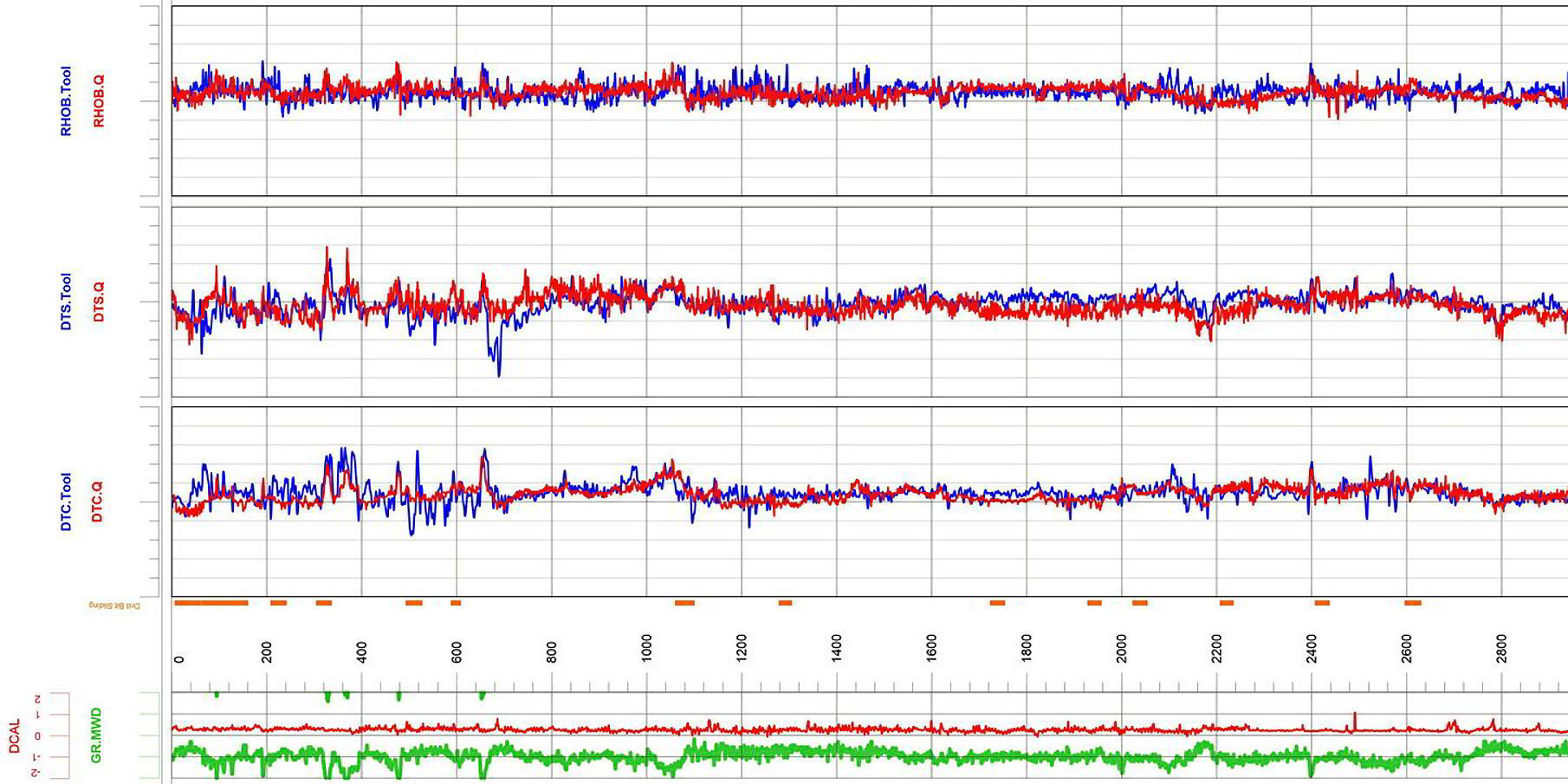Logging a horizontal well costs substantially more than logging a vertical well for a couple of simple reasons.
Gravity helps with logging vertical wells, and after the run is complete, the tools can be retrieved via wireline.
When it comes to logging horizontal wells, conveyance mechanisms are needed to push the tool through the lateral section.
“The logs can be very expensive and from an health and safety standpoint, risky to run,” says Barry Zhang, chief executive and co-founder of Quantico Energy Solutions.
But the need for logging data remains. “We thought that surely there is a better way to get this logging data than requiring people to run expensive tools,” he says.
In 2012, Zhang teamed up with about 15 operators to develop a method called QDrill, which uses artificial intelligence to analyse available drilling information and generate logging data without the need to run additional logging tools.
“Operators all have drilling data, the gamma ray logs, weight-on-bit, torque, revolutions-per-minute data,” he says.
“We developed an artificial software tool in-house that basically trains the model to generate those logs by just using the data that you’re collecting while you’re drilling. It’s data you already have.”
With a database of more than 200 horizontal and vertical wells for training data, Quantico says its models have been calibrated for the major shale basins in the US land market.
Loosely speaking, the QDrill method views the bit as a sensor and analyses drilling data to provide insights into rock properties.
“Our hypothesis was, when you’re drilling, if the driller is not changing anything at the surface in terms of weight and (rotations per minute), but the (rate of penetration) of the bit changes because you’re drilling through different types of rocks, that ultimately reveals the physics of the rock you’re drilling through,” Zhang says.
“The artificial intelligence was a tool that was non-invasive. We didn’t have to convince the oil company to add a tool to their bottomhole assembly.”
The process functions in real time, which provides unconfined compressive strength for drilling optimisation and reduces overall costs for advanced logging while drilling (LWD) measurements in offshore or international markets, he says.
At first, there was “healthy scepticism” that the artificial intelligence method would provide accurate and repeatable results, Zhang says.
Validating the method meant comparing the logs generated through QDrill with those acquired via conventional logging operations.
Comparisons showed “a straight overlay”, he says. “It was within the window of repeatability if they had run the logging tool twice in that well.”
Quantico’s early work was in the Bakken, and the company expanded to wells in other North American shale plays. Earlier this year, the company passed tests on deep-water Gulf of Mexico wells and has an ongoing pilot in the North Sea. Trials in the Middle East are schedule for next year.
“Now we’re spanning geologies from a wide variety of unconventionals, and we’re going to very complex resource plays like deep-water and international assets,” Zhang says.
QDrill has been run on more than 100 wells to date and some “very large” oil companies have qualified the software.
The approach is interesting to companies, Zhang says, because it helps operators working onshore in the US to have a better idea about where in the lateral to put their completions or in offshore and international projects lower their cost per barrel by reducing drilling and LWD costs.
“We’re not competing with tools. We see ourselves as complementary to tools. We’re not saying don’t run any LWD. We’re saying for certain trips use our service, for certain trips, use the tools. You can optimise when you run the tools,” he says.
Existing drilling data may be used to create logs for historical wells, he notes.
Besides reducing costs, the technology minimises the risk of losing a tool downhole. It prevents or reduces the need to put nuclear sources downhole to acquire LWD information, he says.
Zhang says the potential for artificial intelligence is vast and that Quantico’s focus is on how to extract more value from the data that companies already possess.
“The challenge of artificial intelligence is not how many neurons are in my neural network or how is the code constructed. It is, what is the proper problem for artificial intelligence to solve in a fit-for-purpose way?” Zhang says.
